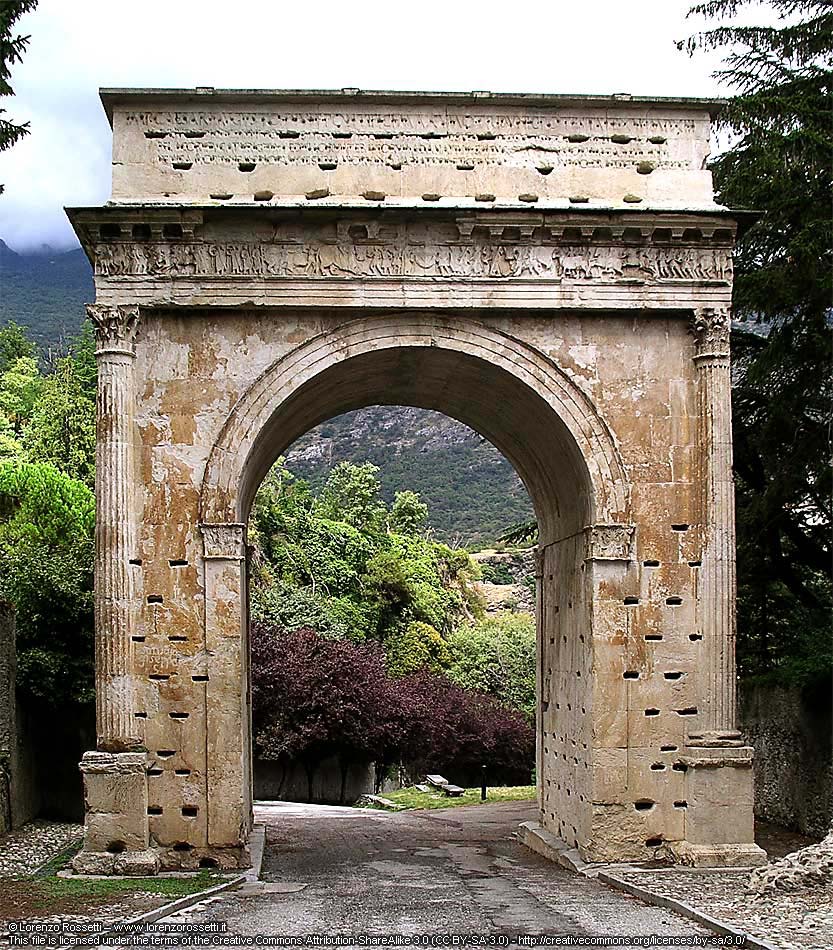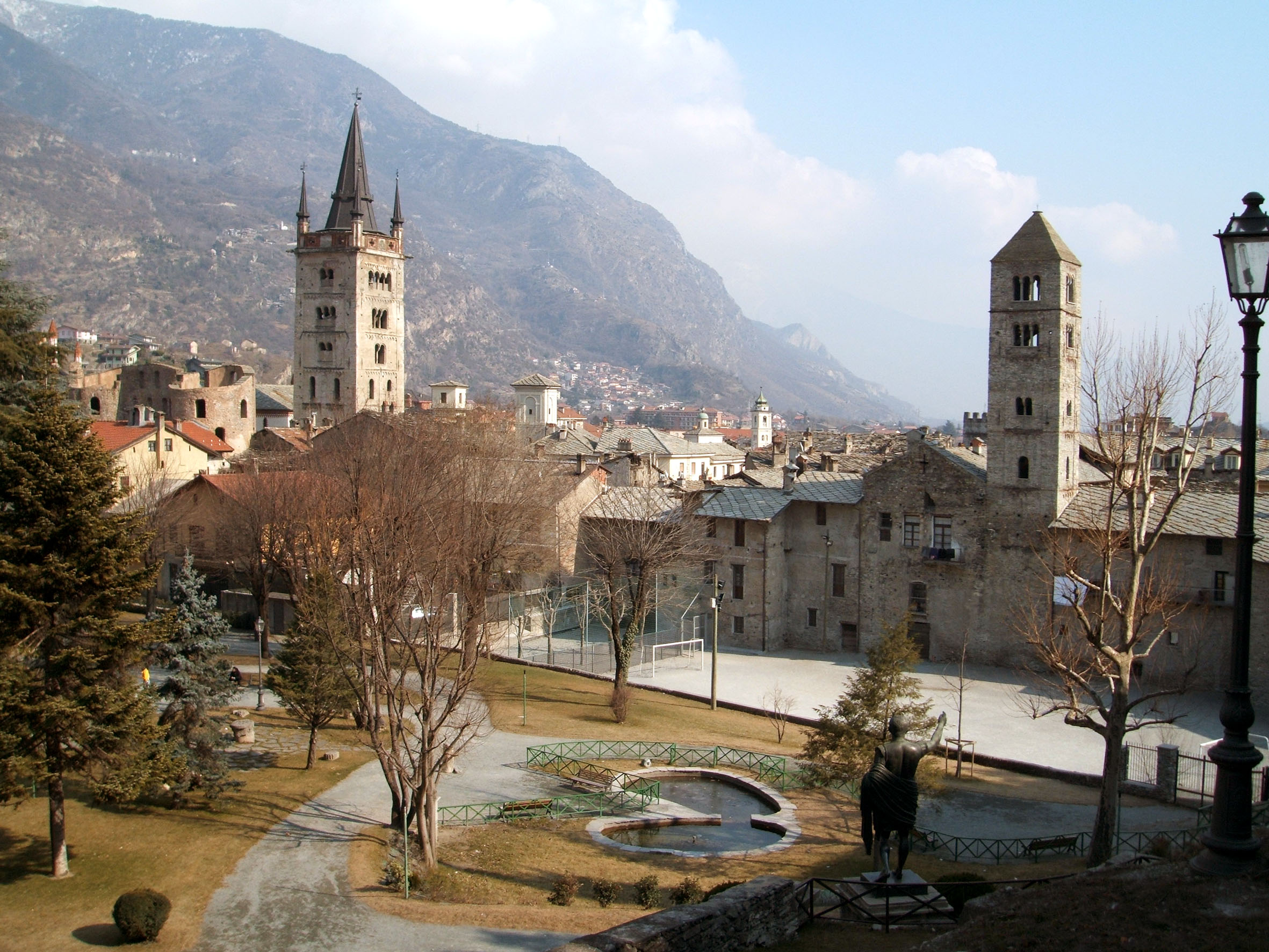|
Venisamores
The Venisami (Gaulish: *''Uenisamoi'') or Venisamores were a Gallic tribe dwelling in the Alps during the Iron Age. Name They are mentioned as ''Venisamorum'' on the Arch of Susa., s.v. ''Venisami''. The ethnic name ''Venisami'' is a latinized form of Gaulish *''Uenisamoi'' (sing. ''Uenisamos''). It can be derived from the stem ''ueni''- ('family, clan, friends') attached to -''sāmo''- ('calm'), and translated as the 'friendly ones'. It is comparable with the personal names ''Uenisamus'' (in Cisalpina) and ''Uenixama'' (in Lepontia). Geography They may have dwelled around Forum Germanici (modern Busca), south of the Binbelli, north of the Epanterii, and east of the Statielli., Map 39: Mediolanum. History They appear on the Arch of Susa, erected by Cottius Marcus Julius Cottius was King of the Celtic and Ligurian inhabitants of the mountainous Roman province then known as '' Alpes Taurinae'' and now as the Cottian Alps early in the 1st century BC. Son and successo ... [...More Info...] [...Related Items...] OR: [Wikipedia] [Google] [Baidu] |
Arch Of Augustus (Susa)
The Arch of Augustus is an important monument constructed in the city of Susa, Piedmont, in the province of Turin. It was originally built at the end of the 1st century BC to record the renewed alliance between Emperor Augustus and Marcus Julius Cottius, a Celto-Ligurian ruler who had been made king and Roman prefect of the Cottian Alps. The arch, together with other remains from the period, such as the Roman amphitheatre and a Roman aqueduct, underscore the importance that the city of Susa had during the Roman period. Description From above, the arch forms a rectangle 11.93 metres long and 7.3 metres wide. It rests on two large bases and there is only one archway. The white marble of the arch was sourced from a nearby quarries at Fornesto and Tre Piloni. The arch has a unique arcade, in which the archivolt is supported by pilasters. The entablature rests on four Corinthian columns placed at the extremities of each corner, such that a quarter of each drum is embedded in the mon ... [...More Info...] [...Related Items...] OR: [Wikipedia] [Google] [Baidu] |
Gaulish
Gaulish was an ancient Celtic languages, Celtic language spoken in parts of Continental Europe before and during the period of the Roman Empire. In the narrow sense, Gaulish was the language of the Celts of Gaul (now France, Luxembourg, Belgium, most of Switzerland, Northern Italy, as well as the parts of the Netherlands and Germany on the west bank of the Rhine). In a wider sense, it also comprises varieties of Celtic that were spoken across much of central Europe ("Noric language, Noric"), parts of the Balkans, and Anatolia ("Galatian language, Galatian"), which are thought to have been closely related. The more divergent Lepontic language, Lepontic of Northern Italy has also sometimes been subsumed under Gaulish. Together with Lepontic and the Celtiberian language, Celtiberian spoken in the Iberian Peninsula, Gaulish helps form the geographic group of Continental Celtic languages. The precise linguistic relationships among them, as well as between them and the modern Insular ... [...More Info...] [...Related Items...] OR: [Wikipedia] [Google] [Baidu] |
Gauls
The Gauls ( la, Galli; grc, Γαλάται, ''Galátai'') were a group of Celtic peoples of mainland Europe in the Iron Age and the Roman period (roughly 5th century BC to 5th century AD). Their homeland was known as Gaul (''Gallia''). They spoke Gaulish, a continental Celtic language. The Gauls emerged around the 5th century BC as bearers of La Tène culture north and west of the Alps. By the 4th century BC, they were spread over much of what is now France, Belgium, Switzerland, Southern Germany, Austria, and the Czech Republic, by virtue of controlling the trade routes along the river systems of the Rhône, Seine, Rhine, and Danube. They reached the peak of their power in the 3rd century BC. During the 4th and 3rd centuries BC, the Gauls expanded into Northern Italy ( Cisalpine Gaul), leading to the Roman–Gallic wars, and into the Balkans, leading to war with the Greeks. These latter Gauls eventually settled in Anatolia, becoming known as Galatians. After the ... [...More Info...] [...Related Items...] OR: [Wikipedia] [Google] [Baidu] |
La Tène Culture
The La Tène culture (; ) was a European Iron Age culture. It developed and flourished during the late Iron Age (from about 450 BC to the Roman conquest in the 1st century BC), succeeding the early Iron Age Hallstatt culture without any definite cultural break, under considerable Mediterranean influence from the Greeks in pre-Roman Gaul, the Etruscans, and the Golasecca culture, but whose artistic style nevertheless did not depend on those Mediterranean influences. La Tène culture's territorial extent corresponded to what is now France, Belgium, Switzerland, Austria, England, Southern Germany, the Czech Republic, parts of Northern Italy and Central Italy, Slovenia and Hungary, as well as adjacent parts of the Netherlands, Slovakia, Serbia, Croatia, Transylvania (western Romania), and Transcarpathia (western Ukraine). The Celtiberians of western Iberia shared many aspects of the culture, though not generally the artistic style. To the north extended the contemporary Pre-Roma ... [...More Info...] [...Related Items...] OR: [Wikipedia] [Google] [Baidu] |
Busca, Piedmont
Busca is a ''comune'' (municipality) in the Province of Cuneo in the Italian region of Piedmont. It is located about southwest of Turin and about northwest of Cuneo. Busca borders the following municipalities: Brossasco, Caraglio, Costigliole Saluzzo, Cuneo, Dronero, Melle, Saluzzo, Roccabruna, Rossana, Tarantasca, Venasca, Villafalletto and Villar San Costanzo. History The municipality of Busca at the beginning of 2019 absorbed the neighbouring comune of Valmala, thus enforcing the results of a referendum held in the summer of 2018.''Busca e Valmala dicono sì alla fusione dei due Comuni''; La Stampa ''La Stampa'' (meaning ''The Press'' in English) is an Italian daily newspaper published in Turin, Italy. It is distributed in Italy and other European nations. It is one of the oldest newspapers in Italy. History and profile The paper was fou ..., 25 June 2018, sewww.lastampa.it/ref> Twin cities Twin cities of Busca include the following: * San Marcos Sud, Argentina ... [...More Info...] [...Related Items...] OR: [Wikipedia] [Google] [Baidu] |
Epanterii
The Epanterii or Epanterii Montani were a small Ligurian tribe dwelling in the lower Alps, near the Mediterranean coast, during the Iron Age. Name They are only mentioned once as ''Epanterii Montani'' by Livy (late 1st c. BC). The name ''Epanterii'' appears to be of Indo-European origin. It can be interpreted as deriving from a stem ''*ep-ant-'', that is, 'belonging to the horse' or 'provided with horses'. Geography The Epanterii dwelled in the lower Alps, near the Mediterranean coast. The exact location of their territory remains uncertain. It was possibly situated in the upper Tanarus valley, north of the Intimilii and Ingauni, and east of the Ecdinii and Vesubiani., Map 16: Col. Forum Iulii-Albingaunum. History By the 3rd century BC, the prosperity of thriving Ligurian coastal centres led to recurrent conflicts with mountainous tribes conducting raids on their richer neighbours. During the Second Punic War (218–201 BC), the Carthaginian Mago Barca made an alliance ... [...More Info...] [...Related Items...] OR: [Wikipedia] [Google] [Baidu] |
Statielli
The Statielli, Statiellātes, or Statiellenses were members of a small Ligurian tribe that inhabited an area south of the river Padus (today the Po). Their chief town was Aquae Statiellae (Acqui Terme), on the road from Vada Sabatia, near Savona to Dertona (Tortona) and Placentia.Harry Thurston Peck, ''Harpers Dictionary of Classical Antiquities'' (1898). Article available onlinhere The Statielli settled in the territory bordered to the west and north by the course of the Tanaro river, to the east by the Orba, and to the south by the Alpine- Apennine Ligurian watershed, an area now included between the current provinces of Alessandria, Savona, Asti and Cuneo. During the early Iron Age, the area today corresponding to southern Piedmont appears to have been inhabited by a different ethnic group without a clear ethnic diversification. It is only from the fourth century BC that the Statielli population is recognizable. The ethnonym contains the typical Ligurian suffix -ello-. ... [...More Info...] [...Related Items...] OR: [Wikipedia] [Google] [Baidu] |
Cottius
Marcus Julius Cottius was King of the Celtic and Ligurian inhabitants of the mountainous Roman province then known as '' Alpes Taurinae'' and now as the Cottian Alps early in the 1st century BC. Son and successor to King Donnus, he negotiated a dependent status with Emperor Augustus that preserved considerable autonomy for his country, making him a Roman governor, and adopted Roman citizenship. Early relationship with Rome The friendship between Cottius's realm and Rome goes back at least to the reign of his father King Donnus; there is numismatic evidence which suggests that Donnus established friendly relations with Julius Caesar. As Caesar needed to cross the Cottii Regnum in 58 BC on his way to Gaul, he made an agreement with King Donnus to have his troops transported on his road as well as having a new paved road being built.Cornwell, H., Alpine Reactions to Roman Power, in Varga, R., Rusu-Bolindeț, V., (eds) Official Power and Local Elites in the Roman Provinces, p. 59 Thi ... [...More Info...] [...Related Items...] OR: [Wikipedia] [Google] [Baidu] |
Historical Celtic Peoples
History (derived ) is the systematic study and the documentation of the human activity. The time period of event before the invention of writing systems is considered prehistory. "History" is an umbrella term comprising past events as well as the memory, discovery, collection, organization, presentation, and interpretation of these events. Historians seek knowledge of the past using historical sources such as written documents, oral accounts, art and material artifacts, and ecological markers. History is not complete and still has debatable mysteries. History is also an academic discipline which uses narrative to describe, examine, question, and analyze past events, and investigate their patterns of cause and effect. Historians often debate which narrative best explains an event, as well as the significance of different causes and effects. Historians also debate the nature of history as an end in itself, as well as its usefulness to give perspective on the problems of the p ... [...More Info...] [...Related Items...] OR: [Wikipedia] [Google] [Baidu] |
Tribes In Pre-Roman Gaul
The term tribe is used in many different contexts to refer to a category of human social group. The predominant worldwide usage of the term in English is in the discipline of anthropology. This definition is contested, in part due to conflicting theoretical understandings of social and kinship structures, and also reflecting the problematic application of this concept to extremely diverse human societies. The concept is often contrasted by anthropologists with other social and kinship groups, being hierarchically larger than a lineage or clan, but smaller than a chiefdom, nation or state. These terms are equally disputed. In some cases tribes have legal recognition and some degree of political autonomy from national or federal government, but this legalistic usage of the term may conflict with anthropological definitions. In the United States, Native American tribes are legally considered to have "domestic dependent nation" status within the territorial United States, with ... [...More Info...] [...Related Items...] OR: [Wikipedia] [Google] [Baidu] |





.jpg)
